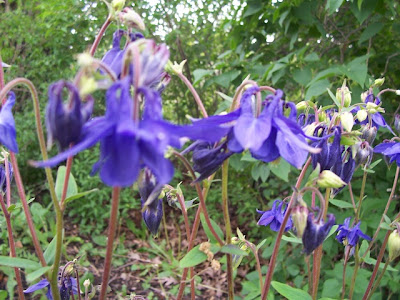We have had the opportunity to work with poultry numerous times through our Friends and family, but this is the first time we've had a flock of our own. We got 26 female chicks from
Mcmurray hatchery. They are a mix of 13 Araucanas, 6 Rhode Island Reds, 6 Red Stars and one unknown exotic chick thrown in as a bonus. Amazingly they all showed up alive, and we have managed to keep them alive for the last 6 weeks.
07/26/2012
The Exotic chick started out white, but turned black as is feathers grew in.
We are feeding them medicated chick starter feed to prevent coccidiosis, and added electrolytes to the water for the first two days to help them get over shipping stress. We started them off in an open bottom brooder pen, and they took to foraging right away.
07/28/2912
08/05/2012
They're getting bigger, I guess I'd better finish the bigger pen!
08/19/2012
Ahhh.... that's better. We move the tractor daily. The front pops up on wheels for easy moving.
In the back we use this trailer dolly I got from my dad, along with the custom hitch he helped me build. It works really well, Nikki is able to move the pen by herself.
The floating brooder has a lightweight plywood roof and flexible insulation for walls. There are several perches in the corners. We have had a lot of trouble with the waterer shown here. It drains out quickly if not leveled well, yet sometimes the water wont come out at all. I've come home more than once and found the bottom dry and the top full.
08/31/2012
New watering system! I ordered the
Avian aqua mizer, and the hens started using them right away. It is similar to the nipples that large commercial growers use, but this one is designed to work off a gravity feed instead of a pressurized pipe. Very easy to install and works well. I am very happy I decided to try them.
I made a couple of these bug traps out of a funnel and a plastic jar. I used zip ties for fasteners. There is an s hook crimped on the funnel so I can hang it on the pen, and small holes in the bottom for drainage. I use them to collect pests for chicken food. It works really well for Japanese Beetles and Asparagus Beetles. I get the funnel underneath them and brush them in. They tend to drop straight down to escape so it works great. The chickens love them, and It turns my garden pest collection into chicken food harvesting. which is somehow less of a chore and more of a game.
Check out the comb on that one on the right. I'm starting to think we got a couple of roosters.
Update: I guess we were right with our rooster suspicions, Nikki hear one crow for the first time this morning. Maybe we will get some babies next year.



